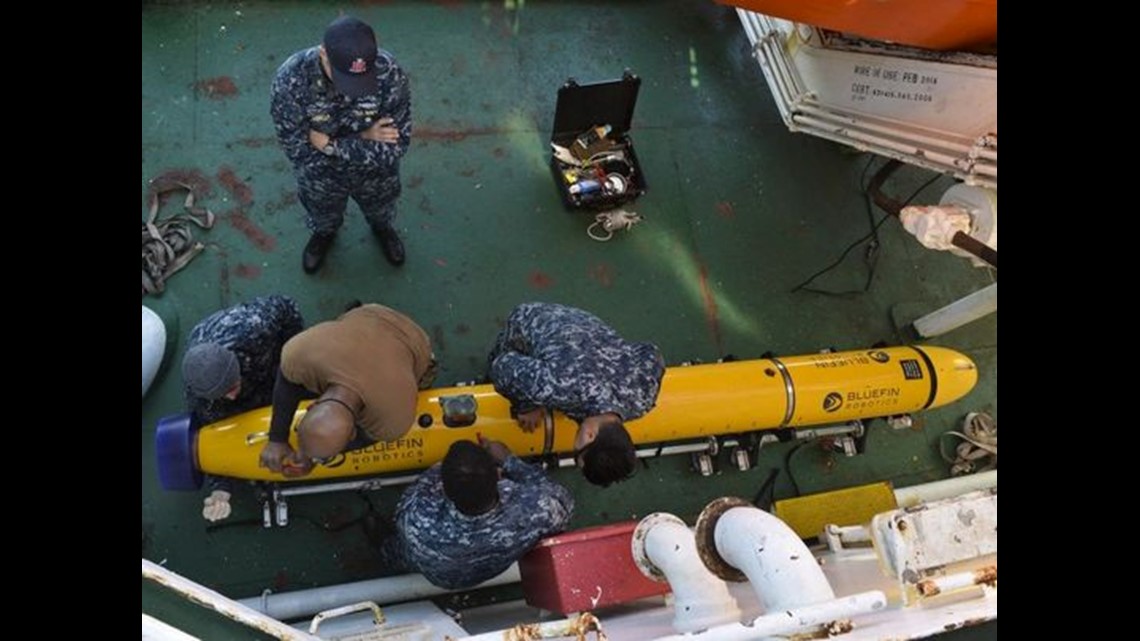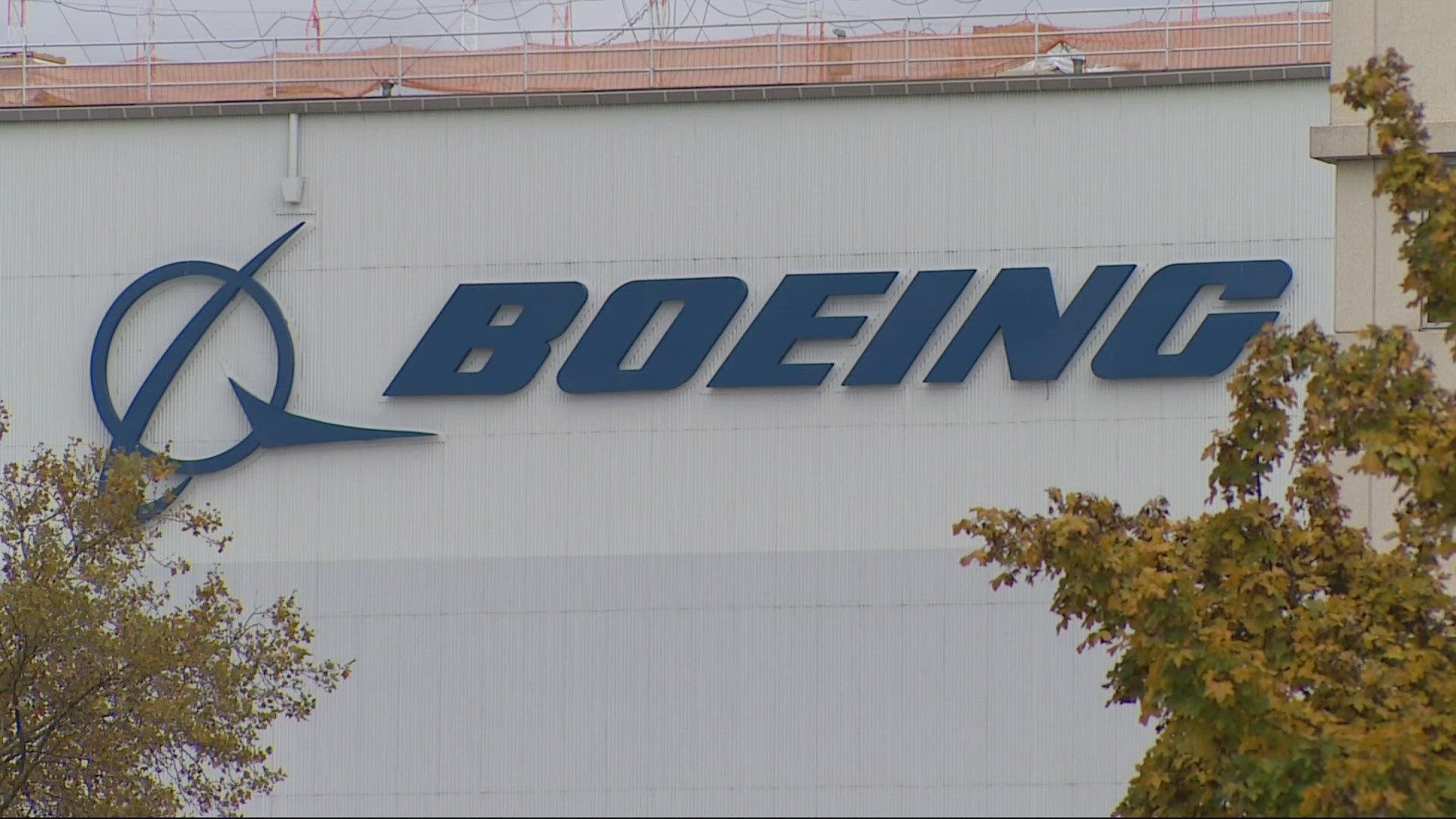For the past 100 years, Keyport has been home to one of Navy's primary efforts to research, develop and test torpedoes, which earned the small, waterfront community the moniker of "Torpedo Town, U.S.A."
Now, Keyport's Naval Undersea Warfare Center is becoming the modern testing ground for a new type of technology that silently operates in the depths — unmanned undersea vehicles, which are known as UUVs.
Those unmanned undersea vehicles are essentially "pre-programmed, small submarines," said Cmdr. Scott Smith, commanding officer of the Navy's newly formed Unmanned Undersea Vehicle Squadron 1.
The squadron's UUVs range from 10-inch torpedo-shaped tubes to large submersibles more than 80 inches in diameter. Many of the UUVs used at Keyport are commercially available, from companies like Bluefin Robotics or Riptide Autonomous Solutions.
The squadron has been tasked with developing the tactics, techniques and procedures that will shape how the Navy will use the unmanned undersea vehicles.
Eventually, the Navy will use UUVs for a variety of missions. Today, they are capable of reducing the risk to divers in the water and extending sensory capabilities for underway submarines, Smith said.
"We'll use UUVs in those areas that are too dangerous to put a manned vessel, and on the other side, we'll use UUVs where it’s just too mundane for a long-term mission to keep a sailor out there," Smith said.
"Those are really the two places I see UUVs working, but we'll never replace the manned systems. In my mind, we’ll always need submarines out there doing what submarines do."
The Navy currently doesn't operate unmanned undersea vehicles from submarines, but Smith foresees a potential for rapid growth with the platform.
"Five years down the road," Smith said, "I'd like to see two UUVs on every submarine in the fleet."
The squadron has already tested its expertise and training with a few real-world situations. It has helped to recover a lost item in Sinclair Inlet that fell over the side of a patrol boat. It assisted the Royal Canadian Mounted Police track down a misplaced piece of equipment in the Nanoose Range near Vancouver Island, British Columbia.


In another instance with significantly higher stakes, a team of six of the squadron's sailors deployed in December to assist with the international search and recovery efforts of the Argentinean navy's lost submarine, A.R.A. San Juan, in the south Atlantic Ocean. The submarine disappeared Nov. 17 with 44 crew members aboard.
Although efforts to locate the submarine's whereabouts have been unsuccessful, the crew was able to provide assistance in the early days of the search efforts with the UUVs' capability to perform side-scanning sonar, which uses sonar echoes to create images of large areas of the seafloor.
A growing force
In the past year, the squadron has grown from 28 sailors with a handful of operational UUVs to 35 sailors and more than a dozen UUVs. By next fall, Smith said the squadron's manpower will almost double in size and, by fiscal year 2023, it is projected to quadruple from its current size.
With that growth, Smith said the Navy is interested in adding billets that could bring subject matter experts to the squadron, such as meteorologists who could analyze sea conditions for operational planning or operational specialists from the surface community.
"We recognize there’s going to be UUV operations from all facets of the Navy and we don’t want to stovepipe ourselves just into submarines," Smith said.
Unlike its aerial counterparts, once an undersea drone is launched, it can't be controlled by an operator on the ground. That means before launch, a UUV's entire mission protocol has to be coded in advance of getting underway.
"Once they go underwater, you can't control them with any type of Wi-Fi or signals," Smith said. "Within about 2,000 yards, you can do acoustic; you can put beeps and bops into the water with very, very small messages, to tell them to come up to the surface or to tell them to abort."
Operations typically start with a mission briefing early in the morning, and their execution can take anywhere from 15 minutes to 30 hours.
For the most part, the UUV's size determines the length of time it can be in the water and what type mission it will be sent on.
"We're limited by power. So if you want a long duration, long stay time with a heavy use payload, you're not going to get that from a small one," Smith said.
While underway, smaller UUVs are typically used to gather imagery, survey sea conditions or extend the sensor reach of sub. Larger unmanned undersea vehicles can take on more complex missions, such as acting as an independent sensor on its own mission.
Getting the UUV into the water is the easy part, but at the end of the mission, recovery can prove to be more difficult, Smith said.
"Once you find the UUV, you have to get close enough that you can snare it or hook it without getting too close to damage the side of the boat," Smith said.
Smaller ones typically require a two-man lift. Medium ones require a specialized trailer — Smith calls it a modified boat trailer. Sailors in immersion suits escort the UUV into the trailer.
After recovering the UUV, crews bring back the data they collected.
For some of the squadron's sailors, being a part of the work to develop the Navy's UUV policies has been a key part of their career.
"It’s exciting, something I’ve just heard whispers of, and now to be able to be hands-on with it is really exciting," said Electronics Technician 1st Class Andrew Hanashiro.
Hanashiro, who has been with the squadron for four months, said the best part of working with the UUVs is to get them out on the water the water for training.
"I just have stars in my eyes every time I see these vehicles," he said.
Electronics Technician 1st Class Eric Maculanlan has been with the squadron for more than four years. He was on the cusp of deciding to get out of the Navy when he learned about the possibility of working with the UUVs.
"It was new to me. It sounded like something fun to do," he said. "It's a lot different aspect and view of the Navy and what happens in the Navy other than being on a submarine with operational life."


First of a kind
Last fall, the Navy decided to formally establish the squadron, and it began operating on Oct. 1.
The squadron is a part of Submarine Development Squadron 5, which is the operational command that oversees the Seawolf-class nuclear-powered fast attack submarines USS Seawolf, USS Connecticut and USS Jimmy Carter.
Keyport is the natural place to locate the new command, said Capt. Doug LaCoste, commanding officer of NUWC Keyport.
"The goal is that (they'll be able to) leverage some of the knowledge that Keyport has in recovering these UUVS that we call torpedoes, which we've done for decades," LaCoste said.
In one instance, one of the squadron's undersea vehicles crushed its nose cone after colliding with an uncharted rock out in the water near Keyport during a training exercise.
Without the shore installation's assistance, it would have taken months to obtain a replacement nose cone from the manufacturer and get the UUV back in working order. Instead, the UUV was back in business a few days later after Keyport was able to 3D print a replacement nose cone in about a day, Smith said.
Smith said the installation's proximity to the water makes it an ideal place for testing the squadron's tech.
"We can pick a UUV right up and you and I can carry it out to the water right out there and put it in," he said.
The squadron is housed in Keyport's Barb Hall, which is named after the legendary World War II-era Gato-class submarine USS Barb.
The Barb is credited with an impressive wartime record, with 12 war patrols. The sub sank five Japanese warships and damaged or sank 34 merchant ships. Most notably, the submarine is credited with "sinking" an enemy supply train after crew members snuck ashore Japanese soil and set up explosive charges on the train track.
"The idea is that the Barb did new and different things, things that were outside of the box," LaCoste said. "That's the idea of bringing UUVRON here."
As the squadron's size and mission grows, LaCoste said Keyport was looking forward to continuing to support the Navy's development of the technology.
"It’s going to grow, and what I want to do is to be ready for the growth," LaCoste said. "As UUVRON develops the tactics to be able to operationally use UUVs, we need to have the infrastructure, we need to be able to test them out here locally and provide feedback."
With that expansion, Smith said it was important for the squadron to continue to build upon Keyport's reputation as a considerate neighbor to those who live in the community around the installation.
"We want to make sure everyone on the water knows what we’re doing and make sure that we’re respectful to the recreational boaters right to be out on the water," Smith said. "I think that's important for people to know that the military cares and my sailors certainly do."



